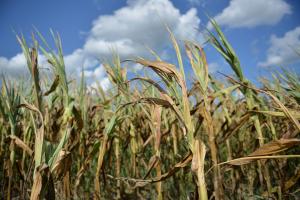CHICAGO, Dec. 20 (UPI) — If the conditions of the Dust Bowl were replicated today, modern agriculture would be devastated, according to scientists at the University of Chicago.
Researchers analyzed how extreme drought and heat would affect maize, soy and wheat crops in the United States. The results show conditions similar to the 1930s would drastically reduce modern crop yields.
“We expected to find the system much more resilient because 30 percent of production is now irrigated in the United States, and because we’ve abandoned corn production in more severely drought-stricken places such as Oklahoma and west Texas,” Joshua Elliott, a research scientists at the Center for Robust Decision Making on Climate and Energy Policy, said in a news release. “But we found the opposite: The system was just as sensitive to drought and heat as it was in the 1930s.”
Though agricultural practices have evolved since the 1930s, most changes have privileged yield over resilience and sustainability. As a result, scientists suggest many staple crops remain vulnerable to extreme weather.
“We knew a Dust Bowl-type drought would be devastating even for modern agriculture, but we expected technological advancements to mitigate those damages much more than our results suggested,” said Michael Glotter, a graduate student in geophysical sciences at Chicago. “Technology has evolved to make yields as high as possible in normal years. But as extreme events become more frequent and severe, we may have to reframe how we breed crops and select for variance and resilience, not just for average yield.”
It’s likely a future Dust Bowl-like decade would be more catastrophic than the drought that devastated the 1930s. Today’s severe drought conditions are accompanied by ever-rising temperatures.
“By mid-century even a normal year in precipitation could be as bad as what we saw in 1936,” Elliott said. “And a year with even a 10 to 20 percent loss of precipitation becomes extraordinarily damaging.”
The new research was published in the journal Nature Plants.

COMMENTS
Please let us know if you're having issues with commenting.